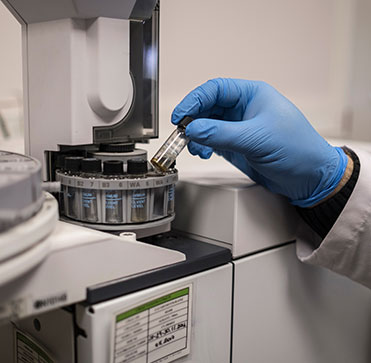Budget-friendly Asbestos Testing: Protect Your Residential Property from Hidden Dangers
Budget-friendly Asbestos Testing: Protect Your Residential Property from Hidden Dangers
Blog Article
The Total Process of Accredited Asbestos Checking to Ensure Property Compliance
In the realm of home monitoring and compliance, the process of approved asbestos screening stands as an essential part to make sure the safety and well-being of owners. Understanding the elaborate actions included in this screening procedure is vital for home owners and managers alike. From the preliminary assessment to the final analysis of outcomes, each stage plays a crucial function in establishing the visibility of asbestos within a residential property. Let's check out just how this precise process unfolds to guarantee adherence to rigid guidelines and guard against possible health and wellness risks.
Accredited Asbestos Screening: Preliminary Evaluation
In performing the initial analysis for accredited asbestos screening, a meticulous evaluation of the property's materials is essential to accurately identify possible asbestos-containing products. Unique focus is offered to products that are prone to harm or disruption, as these scenarios can launch dangerous asbestos fibers right into the air.
Approved asbestos assessors comply with rigorous procedures established by regulatory bodies to make sure the accuracy and reliability of the testing procedure. By diligently documenting searchings for and making use of sophisticated screening approaches, assessors can give property owners with a detailed record outlining the visibility of asbestos, if any kind of, and the advised actions for mitigation or elimination. This first evaluation sets the foundation for subsequent activities to deal with asbestos issues and guarantee the safety and conformity of the home.
Sample Collection Procedures for Asbestos Examining
Efficient sample collection procedures are important in making sure exact asbestos screening outcomes and compliance with regulative standards. When collecting examples for asbestos screening, it is critical to adhere to strict procedures to reduce the danger of contamination and make sure the integrity of the results.
To start with, it is necessary to recognize the thought asbestos-containing products (ACMs) and focus on tasting areas based upon aspects such as the material's condition, accessibility, and potential for disruption. Asbestos Testing. Samples must be gathered from different locations within the building to provide a thorough assessment of asbestos presence
Throughout sample collection, certified specialists should wear suitable individual safety equipment (PPE) to guard against asbestos exposure. They must use tidy devices, such as non reusable gloves and plastic bed linen, to protect against cross-contamination between samples. Examples ought to be thoroughly gathered utilizing a specified method, such as wet cleaning or coring, and securely sealed in closed containers about his to protect their honesty throughout transportation to the lab for evaluation.
Lab Evaluation Refine for Asbestos Examples
Upon completion of the sample collection process, the asbestos samples are carefully carried to accredited laboratories for thorough evaluation. The very first step in the research laboratory evaluation procedure is example preparation, where the gathered examples are meticulously processed to draw out the asbestos fibers.

When the analysis is total, a thorough report is created, describing the searchings for and confirming whether asbestos exists, the kind of asbestos fibers identified, and the focus degrees. This details is essential for homeowner to take the necessary steps to guarantee compliance with asbestos laws and secure the health of passengers.

Reporting and Interpretation of Asbestos Test Outcomes
Certified asbestos screening research laboratories supply in-depth records that use important understandings right into the existence, kind, and focus levels of asbestos fibers located in examples collected from residential properties. These records are vital for property proprietors and managers to comprehend the danger postured by asbestos and make informed decisions regarding its monitoring or removal. The reports commonly basics consist of details on the methods made use of for testing, the places from which examples were taken, the kind of asbestos identified (such as chrysotile, amosite, or crocidolite), and the concentration degrees of asbestos fibers detected.
Translating these outcomes needs expertise to assess the possible health and wellness my website dangers connected with asbestos exposure, establish the ideal training course of action, and ensure regulatory compliance (Asbestos Testing). Depending upon the searchings for, referrals might range from continued monitoring and upkeep to encapsulation or full asbestos abatement. Building proprietors should very carefully assess these reports and consult with asbestos specialists to create a detailed plan for addressing any type of asbestos problems identified
Guaranteeing Residential Property Conformity With Asbestos Regulations
To keep adherence with asbestos laws, building owners should vigilantly apply steps to ensure conformity with appropriate laws and guidelines. This includes performing normal asbestos inspections by approved specialists to recognize any kind of presence of asbestos-containing products within the residential or commercial property. When asbestos is determined, building owners should comply with asbestos monitoring plans that outline proper control, elimination, or encapsulation treatments to prevent exposure and spread of asbestos fibers. Compliance additionally entails keeping thorough documents of asbestos screening, upkeep, and removal tasks for inspection objectives.
Homeowner must supply asbestos recognition training to workers and residents to decrease the risk of asbestos exposure and make certain appropriate handling of products that may consist of asbestos. Furthermore, it is important to remain notified regarding any updates or adjustments in asbestos laws to readjust administration practices accordingly. By proactively resolving asbestos conformity requirements, homeowner can produce a safe environment for residents and reduce prospective legal and health and wellness risks linked with asbestos exposure.
Final Thought
To conclude, certified asbestos screening is a crucial procedure for guaranteeing residential or commercial property conformity with regulations. The first analysis, sample collection procedures, lab analysis, and analysis of outcomes are very important action in this procedure. By following these procedures, homeowner can recognize and address any asbestos threats existing, safeguarding the wellness and safety of occupants and keeping compliance with regulative requirements.
Report this page